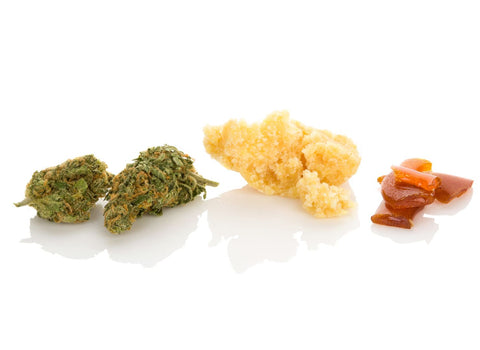
Low doses of THC and CBD may trigger antitumor responses and cell death in melanoma.
In a 2020 Australian review of 19 articles, 40% of in vivo studies showed that THC and CBD reduced tumor growth and promoted apoptosis and autophagy in melanoma cells. This means that they caused programmed death and self-degradation of melanoma cancer cells.
Microdosing cannabis may provide remarkable therapeutic effects to treat a plethora of medical conditions—anything from neuropathic pain and insomnia to chronic stress, depression, posttraumatic stress disorder (PTSD), and some forms of cancer.
Let’s see how taking our low-dose THC gummies may help you fight melanoma and improve your overall health.
What is melanoma?
Melanoma is the most aggressive type of skin cancer. It develops from pigment-producing cells called melanocytes. Melanoma, or “black tumor,” grows quickly and can metastasize to other organs if left untreated.
Melanocytes produce melanin, a pigment responsible for skin color and protection of the deeper skin layers from ultraviolet radiation (UV) damage. Under normal circumstances, melanocytes are spread out evenly at the lower part of the epidermis (skin) as they continue to produce melanin in small amounts when exposed to UV rays.
Sometimes melanocytes form a cluster and produce more pigmentation, causing benign, non-cancerous moles to grow. As the abnormal cancerous melanocytes rapidly multiply, they cause uncontrolled pigment production, forming tumors that invade the surface and the deeper layers of the skin.
From the deeper skin layers (vertical growth phase), melanoma can more easily spread to lymph nodes and the bloodstream, where it can metastasize to other organs and form tumors.
What are the symptoms of melanoma?
Common symptoms of early-stage melanoma include:
- Asymmetrical shape: benign moles tend to be round, while melanoma moles often have an irregular shape.
- Uneven, ragged, blurred, or notched borders.
- Color changes.
- Diameter: moles larger than 6mm have higher melanoma risk.
- Change over time in size, shape, color
- Itching and bleeding
- Enlarged lymph nodes.
- Ulceration.
- Fatigue and flu-like illness.
Examine your own set of moles and freckles and put yourself in a position to quickly identify irregularities. If you notice any new areas of concern or abnormal changes to existing markings, contact your doctor as soon as possible to schedule a check-up.
What causes melanoma?
Melanoma does not seem to have a single cause. It develops from a combination of genetic and environmental risk factors that combine to trigger abnormal changes in skin cells. The most significant contributors to melanoma are:
- Excessive exposure to UV rays from sunlight or tanning beds causes damage to skin cells, which can lead to skin cancer.
- People with fair skin have less protective melanin and higher melanoma rates. Those with blonde or red hair, light eyes, and skin that burns easily have elevated risk.
- More than 50 common moles or several unusual-looking moles signal a higher predisposition for melanoma.
- Certain gene mutations raise the chances of developing melanoma. Inherited mutations and alterations in certain tumor suppressor genes disrupt the cellular mechanisms that govern appropriate, controlled cell growth.
- Melanoma risk increases steadily with age, as DNA damage accumulates. The average age of diagnosis is 65 years old.
How is melanoma treated?
The treatments for melanoma depend on the stage of progression when the cancer is detected. Standard treatments for melanoma are:
- Excisional surgery removes melanoma growths and margins of surrounding skin.
- Immunotherapy prompts the body's immune system to attack cancer cells. This includes immune cells, checkpoint inhibitors, interferons, interleukins, and vaccines.
- Targeted therapy focuses on specific molecular melanoma drivers and mutations in specific genes.
- Chemotherapy employs powerful cytotoxic chemicals that systemically kill rapidly dividing cancer cells. This type of cancer treatment is often used at advanced stages.
- Radiation involves high energy beams after lymph node surgery to attack remaining cancer cells and for advanced melanoma pain relief or reduction of symptoms.
- Localized chemotherapy involves concentrated anti-cancer drugs injected directly into tumors, or applied topically to melanoma lesions on the skin's surface.
- Nanotherapy involves microscopic nanoparticles loaded with chemotherapy drugs that are injected intravenously. This targets delivery specifically to cancer cells to limit side effects.
- Gene therapy is an experimental approach that aims to treat melanoma by modifying the expression of disease-related genes.
Traditional treatments for melanoma have demonstrated effectiveness, but they can also be aggressive and invasive. As a result, many cancer patients are seeking more natural approaches to manage the disease and reduce side effects. Microdosing cannabis may be a reliable and natural way to reap the potential anticancer benefits and help fight this particularly aggressive skin cancer.
Now might be a good time to read our in-depth guide to Delta-9-tetrahydrocannabinol (Delta 9 THC) and learn about its effects and benefits.
What does the research say about cannabis and melanoma?
Research on the role of cannabinoids on melanoma has shown promising results, although the studies are still in the early stages and more research is needed to confirm these findings.
Here’s what we know so far about the way cannabis may help fight skin cancer, particularly melanoma.
- German researchers examined the potential of cannabinoids targeting the endocannabinoid system to treat skin cancer. Their review found evidence that cannabinoids can fight skin cancer progression by suppressing tumor growth, proliferation, blood vessel development, and invasion while promoting cancer cell death. The authors conclude that cannabinoids may be used as “potential pharmaceuticals for the treatment of melanoma and squamous cell carcinoma.”
- A 2020 review looked into the effects of cannabinoids on melanoma in vivo. It found six eligible studies indicating cannabinoids can reduce melanoma tumor growth and promote cancer cell death through apoptosis and autophagy.
- Richtig, et. al. demonstrated that cannabinoids reduce melanoma cell viability by initiating apoptosis through caspase activation and mitochondrial disruption. Cannabinoids significantly decreased tumor growth in mice without interfering with the targeted therapy trametinib, suggesting the potential benefits of combining cannabinoids with other melanoma treatments.
- Polish researchers suggest that cannabinoids can limit metastasis, reduce melanoma growth, induce cancer cell death, and improve the quality of life for melanoma patients.
The research clearly hints that cannabis compounds could someday prove to be a new weapon in the anti-cancer arsenal. More studies are needed to confirm this, but based on what we already know about the potent antitumor effects of THC and CBD, there is a reason for optimism.
If you’re struggling with cancer or simply want to enjoy something sublimely delicious, try our Euphoria gummies infused with berries. They offer mouthwatering flavor and a carefully balanced combination of THC and CBD.
Can cannabis help fight cancer?
Beyond melanoma, there’s a considerable body of evidence that cannabis can combat cancer in many forms, from breast cancer to prostate cancer and beyond.
As Hinz and Ramer demonstrated, the “data increasingly suggest that [cannabis acts as a] antimetastatic and anti-angiogenic tumour therapy and support[s] the immune system in its defence against tumours.”
Here are some of the mechanisms of action for cannabis compounds against cancer.
- Inhibit tumor growth and metastasis.
- Suppress cancer cell proliferation.
- Suppress the development of blood vessels that cancer cells feed on.
- Hinder treatment resistance in many types of tumors, making them promising additions to cancer therapy.
- Support the immune system in its fight against cancer.
As our exploration of cannabis’s effects on cancer shows, the Hinz and Ramer study is one of many validating the case for cannabis fighting cancer.
Central to the cannabinoid-cancer interaction, our body’s endocannabinoid system (ECS) plays an important role in cancer defense.
How the endocannabinoid system combats cancer
The endocannabinoid system is a complex network of signals and receptors that are responsible for a wide range of bodily functions. It is composed of endocannabinoids, enzymes that break them down, and cannabinoid receptors.
Delta 9 is a phytocannabinoid and has a similar structure to the endocannabinoids. It binds strongly to cannabinoid receptors, specifically CB1 and CB2 receptors. This binding triggers cellular responses that produce diverse effects in the body. When taken at sufficient doses, Delta 9’s interaction with CB1 receptors produces the “high” traditionally associated with THC.
While higher doses may cause psychoactive effects, low amounts of THC produce a wide range of therapeutic benefits. That’s why we stick to small, controlled amounts in our gummies and drinks. Low-dose cannabis edibles may help inhibit tumor cell proliferation, reduce tumor invasion and metastasis, and induce apoptosis in tumor cells all through their intricate interactions with the ECS.
Fraguas-Sánchez, et. al. discovered that human leukemia cells expressed high levels of CB2 receptors. This means that leukemic cells are rich in CB2 receptors that cannabinoids can target to induce cancer cell death.
Many of our CBD products contain low doses of THC. That’s why our low-THC Energy gummies might just change your life. Only 2.5 mg of Delta 9 will produce a mild high, perfect for uplifting your mood, while in combination with CBD, it may be able to reinforce your body against cancer-related damage.
Find out why the effects of THC and CBD make such a good combo.
Anti-metastatic properties of THC and CBD
Metastasis is the process by which cancer cells migrate from the main tumor to other parts of the body. Cannabis seems to reduce metastasis by impeding cancer cell invasion and migration.
According to Preet, et. al., “THC was able to inhibit tumor growth and lung metastases in a murine model of lung cancer.” Honarmand, et. al suggest that “other in vivo studies demonstrated that treatment with CBD reduced colon cancer cell proliferation, induced apoptosis, and also had anti-metastatic and anti-angiogenesis effects.”
Anti-proliferative effect of cannabis
Cancer cell proliferation is the rapid growth of cancer cells that leads to the formation of tumors. Some studies have shown that small amounts of cannabis, specifically the combination of THC and CBD, may have the potential to inhibit human lung cancer cell proliferation.
In a 2010 study, cannabidiol was shown to enhance the anti-cancer and anti-proliferative effects of THC on glioblastoma tumor cells through synergistic modulation of multiple cell signaling pathways, and the induction of reactive oxygen species and apoptosis.
In the U251 and SF126 glioblastoma cell lines, Delta(9)-THC and cannabidiol acted synergistically to inhibit cell proliferation. The treatment of glioblastoma cells with both compounds led to significant modulations of the cell cycle and induction of reactive oxygen species and apoptosis.
Cannabis induces cancer cell apoptosis
Apoptosis is a process of programmed cell death. It involves a series of biochemical events that change the cell's morphology (shape and structure), leading cells to self-destruct. Inducing cancer cell apoptosis is a vital way of fighting cancer.
While cancerous cells often have mechanisms to avoid apoptosis— allowing them to grow and spread uncontrollably—cannabis may remove their ability to avoid apoptosis.
A 2022 study on oral cancer found that CBD has a cytotoxic and pro-apoptotic effect on cancer cells. CBD seems to lower the resistance of cancer cells to treatment and even change their morphological characteristics to hinder their growth.
…CBD has a cytotoxic effect on cell viability and induces cell apoptosis. CBD also increases cytotoxicity on cell survival and the migration of oral cancer cells, so it may be a therapeutic drug for oral cancer.
Pretty awesome, right? And get this: while killing off rogue cells, cannabis compounds just might lend a hand for some serene shut-eye too. If you’re fighting insomnia while fighting the good fight against cancer, our Sleep Plus edibles may provide the nighttime rest your mind and body need. These lavender-infused gummies combine only 2 mg of THC, 25 mg of CBD, and a touch of melatonin to bring the whole sleeping experience to a whole new level.
Many patients undergoing cancer treatment are struggling with sleep and other unpleasant side effects of chemo.
Product QUIZ
Need help deciding what product is best for you? Take our quiz, just three questions until your perfect match!
Cannabis and chemotherapy-related side effects
When it comes to alleviating the side effects of chemotherapy, THC and CBD have similar medicinal effects.
A 2017 study revealed that “CBD may be potent and effective at preventing the development of chemotherapy‐induced peripheral neuropathy, and its clinical use may be enhanced by co‐administration of low doses of THC.” Read all about the analgesic properties of cannabis in treating neuropathy.
A 2018 study found that 96% of cancer patients in the study reported an improvement in chemotherapy-related side effects after regular low-dose cannabis use. The study concludes that THC and CBD may be used as adjunct treatments in palliative care to help cancer patients cope with symptoms related to their illness.
CBD and THC work together in synergy to enhance each other’s benefits and produce greater therapeutic effects than each cannabinoid would separately. It’s called the entourage effect.
…CBD displays an entourage effect (the mechanism by which non-psychoactive compounds present in cannabis modulate the overall effects of the plant), and is capable of improving tolerability and perhaps also the safety of THC by reducing the likelihood of psychoactive effects and antagonizing several other adverse effects of THC (sedation, tachycardia, and anxiety). (Vučković, et. al.)
Here’s how the entourage effect and small amounts of cannabis can help alleviate chemo-induced side effects.
- THC reduces the symptoms of nausea and vomiting in cancer patients.
- THC and CBD exert potent analgesic properties, aiding people with cancer undergoing chemo.
- CBD and THC can help improve sleep quality.
- Delta 9 can stimulate appetite and help cancer patients maintain their weight during chemotherapy by inducing feelings of hunger and making food more appealing.
- Cannabis can help manage anxiety and depression due to its interaction with serotonin receptors in the brain.
THC gummies typically take between 30 and 120 minutes to kick in, which is much slower than other consumption methods. However, gummies offer more sustainable and longer-lasting effects, they are safer and more reliable.
Order our Relax Plus gummies to experience a new level of tranquility. A balanced ratio of CBD and THC may help you improve your appetite and sleep better.
"Like the effects this has on me. I can take it to relax, but still be able to concentrate and do things without feeling buzzed."
If you feel like kicking back with your favorite beverage, we have a way to make it even more relaxing. Add our Buzz drops to your non-alcoholic drink of choice and soothe the stresses of the day.
Learn how to infuse drinks with low THC.
Where to buy the best THC gummies and drinks
In the exploding market of cannabis edibles, not all Delta 8 or Delta 9 gummies are created equal. Plenty of shady sellers peddle underdosed or outright dangerous products that are packed with harmful chemicals.
Thankfully, exceptional THC edibles do exist for consumers who are seeking safe alternatives to unwind and uplift their mood. That’s why strict safety testing and purity standards matter tremendously with any Delta 8 or Delta 9 gummy brand you explore. Our edibles offer optimal microdose blends to ease pain, reduce anxiety, improve sleep, and heighten senses without any heavy sedation or impairment.
Treat yourself to cannabis confections made the right way. Shop from nama and experience the benefits of cannabinoids.
If delicious non-alcoholic craft mocktails are your thing, check out where to buy the best THC drinks.
Other types of skin cancer
Skin cancer is the most common type of cancer, with over 5 million cases diagnosed annually in the United States. Apart from melanoma—which is less common, yet far more invasive—there are several other types of skin cancer:
- Basal cell carcinoma (BCC) is the most prevalent type of cancer. It develops from basal cells within the outermost layer of skin. These abnormal growths rarely spread to other parts of the body, but without treatment can grow into nearby areas. BCC has a cure rate of over 95% with early diagnosis and treatment.
- Squamous cell carcinoma (SCC) arises from epidermal cells called keratinocytes which make up most of the skin’s upper layers. This skin cancer may appear as red, scaly patches or fast-growing bumps. SCC is more aggressive than BCC and can metastasize if not treated promptly. With early intervention, it has a high cure rate of 90%.
- Merkel cell carcinoma is a rare, aggressive skin cancer that develops from the skin’s Merkel cells. It often starts as a painless firm nodule and can spread rapidly.
- Kaposi sarcoma develops from the cells lining blood and lymphatic vessels. It causes reddish-purple lesions and is more common in people with weakened immune systems.
- Cutaneous T-cell lymphoma starts from malignant T-cells as scaly reddish rash areas that keep returning.
- Cutaneous B-cell lymphoma develops when the B-cells of the immune system become cancerous. It can appear as localized or widespread skin lesions.
- Skin adnexal tumors start in the hair follicles or skin glands and usually grow slowly.
How many types of melanoma are there?
Melanoma is classified into several subtypes based on where the cancer cells originate and their clinical characteristics. The major subtypes of melanoma are:
- Superficial spreading melanoma is the most common type, accounting for over 70% of cases. It typically occurs due to sun exposure. At first, it grows horizontally on the skin’s outer layer before becoming invasive.
- Nodular melanoma appears as dark raised bumps and spreads quickly. It’s common on the trunk and legs.
- Lentigo maligna melanoma begins as flat, brown spots with irregular borders, typically on chronically sun-exposed facial skin. It progresses slowly over the years as it invades deeper skin layers.
- Acral lentiginous melanoma is very rare and occurs on palms, soles of feet, or under nails. It’s more common on darker skin types.
Cannabis and melanoma FAQ
What are cannabinoids used for in dermatology?
Emerging research on the cutaneous endocannabinoid system suggests exogenous cannabinoids have a potential role in managing different skin conditions. Scientific studies indicate cannabinoids can beneficially impact skin physiological processes that are dysregulated in diseases such as dermatitis, scleroderma, lesions, inflammation, pruritus, and wounds.
Phytocannabinoids such as THC and CBD could restrain the growth and progression of nonmelanoma skin cancers and malignant melanoma through anti-proliferative, anti-angiogenic, pro-apoptotic, anti-metastatic mechanisms. More research is still required to establish the efficacy and safety of cannabinoids for different dermatologic applications.
Are cannabinoids good for your skin?
Preliminary studies imply THC and CBD may have therapeutic effects in certain skin conditions by interacting with cutaneous endocannabinoid system receptors and signaling pathways. In vitro and rodent model studies demonstrate they can reduce pain, inflammation, allergic responses, pruritus, and even proliferative disorders by restoring dysregulated homeostasis.
Can I use CBD with chemotherapy?
Intriguing cell lines and animal research indicate combining cannabinoids with conventional chemotherapies could augment anti-cancer efficacy via synergistic interactions, overcome tumor chemoresistance, and allow lower chemotherapeutic dosing to reduce toxicity.
Without clinical guidelines, patients should abstain from resorting to THC and CBD as chemotherapeutic agents until controlled human trials establish safe CBD doses, interactions, and therapeutic validity of such protocols across different cancer subtypes.
Can CBD oil help treat skin cancer?
Animal studies found CBD from CBD oil might slow or stop the growth and spread of basal cell carcinoma, squamous cell carcinoma cells, and deadly malignant melanoma. CBD seems to disrupt tumors' abilities to proliferate, pump out blood vessels to feed themselves, invade healthy tissue, and resist cell death. Topical applications in particular show promise.
What we now need are human trials to confirm the anti-cancer effects of cannabinoids and CBD oil in people, how to maximize them, and if the benefits outweigh any health risks.
Can CBD interact badly with my medications?
CBD does seem to inhibit certain liver enzymes, causing other drugs you might be taking to hang around longer in your system since they don't get properly broken down. That means you'll want to track any side effects in case CBD causes medication levels to get too high. Your doctor should monitor this closely if combining CBD with substances like blood thinners, seizure meds, cholesterol drugs, antidepressants, antibiotics, heart medications, and others also metabolized by liver enzymes.
Potential CBD interactions with other drugs are not well mapped out yet, so it is better to let your medical team know about any cannabis product use, especially if you start experiencing weird or worsened symptoms.
Resources
Bachari, A., Piva, T. J., Salami, S. A., Jamshidi, N., & Mantri, N. (2020). Roles of Cannabinoids in Melanoma: Evidence from In Vivo Studies. International Journal of Molecular Sciences, 21(17). https://doi.org/10.3390/ijms21176040
Hinz, B., & Ramer, R. (2022). Cannabinoids as anticancer drugs: Current status of preclinical research. British Journal of Cancer, 127(1), 1-13. https://doi.org/10.1038/s41416-022-01727-4
Fraguas-Sánchez, A. I., Martín-Sabroso, C., & Torres-Suárez, A. I. (2018). Insights into the effects of the endocannabinoid system in cancer: A review. British Journal of Pharmacology, 175(13), 2566-2580. https://doi.org/10.1111/bph.14331
Preet A, Ganju RK, Groopman JE. Delta9-Tetrahydrocannabinol inhibits epithelial growth factor-induced lung cancer cell migration in vitro as well as its growth and metastasis in vivo. Oncogene. 2008 Jan 10;27(3):339-46. doi: 10.1038/sj.onc.1210641. Epub 2007 Jul 9. PMID: 17621270.
Honarmand, M., Namazi, F., Mohammadi, A., & Nazifi, S. (2018, August 27). Can cannabidiol inhibit angiogenesis in colon cancer? Comparative Clinical Pathology. https://doi.org/10.1007/s00580-018-2810-6
Marcu JP, Christian RT, Lau D, Zielinski AJ, Horowitz MP, Lee J, Pakdel A, Allison J, Limbad C, Moore DH, Yount GL, Desprez PY, McAllister SD. Cannabidiol enhances the inhibitory effects of delta9-tetrahydrocannabinol on human glioblastoma cell proliferation and survival. Mol Cancer Ther. 2010 Jan;9(1):180-9. doi: 10.1158/1535-7163.MCT-09-0407. Epub 2010 Jan 6. PMID: 20053780; PMCID: PMC2806496.
Huang CC, Chiu SC, Chao SC, Liao HY, Lee SP, Huang CC, Cho DY. Real-Time Monitoring of the Cytotoxic and Antimetastatic Properties of Cannabidiol in Human Oral Squamous Cell Carcinoma Cells Using Electric Cell-Substrate Impedance Sensing. Int J Mol Sci. 2022 Dec 13;23(24):15842. doi: 10.3390/ijms232415842. PMID: 36555480; PMCID: PMC9785110.
Ramer, R., Wendt, F., Wittig, F., Schäfer, M., Boeckmann, L., Emmert, S., & Hinz, B. (2022). Impact of Cannabinoid Compounds on Skin Cancer. Cancers, 14(7). https://doi.org/10.3390/cancers14071769
Bachari, A., Piva, T. J., Salami, S. A., Jamshidi, N., & Mantri, N. (2020). Roles of Cannabinoids in Melanoma: Evidence from In Vivo Studies. International Journal of Molecular Sciences, 21(17). https://doi.org/10.3390/ijms21176040
Richtig, G., Kienzl, M., Rittchen, S., Roula, D., Eberle, J., Sarif, Z., Pichler, M., Hoefler, G., & Heinemann, A. (2023). Cannabinoids Reduce Melanoma Cell Viability and Do Not Interfere with Commonly Used Targeted Therapy in Metastatic Melanoma In Vivo and In Vitro. Biology, 12(5), 706. https://doi.org/10.3390/biology12050706
Marzęda, P., Drozd, M., Wróblewska-Łuczka, P., & Łuszczki, J. J. (2021, July 15). Cannabinoids and their derivatives in struggle against melanoma. Pharmacological Reports. https://doi.org/10.1007/s43440-021-00308-1
King, K. M., Myers, A. M., Tuma, R. F., Tallarida, R. J., Walker, E. A., & Ward, S. J. (2017). Single and combined effects of Δ9‐tetrahydrocannabinol and cannabidiol in a mouse model of chemotherapy‐induced neuropathic pain. British Journal of Pharmacology, 174(17), 2832-2841. https://doi.org/10.1111/bph.13887
Bar-Lev Schleider L, Mechoulam R, Lederman V, Hilou M, Lencovsky O, Betzalel O, Shbiro L, Novack V. Prospective analysis of safety and efficacy of medical cannabis in large unselected population of patients with cancer. Eur J Intern Med. 2018 Mar;49:37-43. doi: 10.1016/j.ejim.2018.01.023. PMID: 29482741.
Vučković, S., Srebro, D., Vujović, K. S., Vučetić, Č., & Prostran, M. (2018). Cannabinoids and Pain: New Insights From Old Molecules. Frontiers in Pharmacology, 9, 416167. https://doi.org/10.3389/fphar.2018.01259
Yoo, E. H., & Lee, J. H. (2022). Cannabinoids and Their Receptors in Skin Diseases. International Journal of Molecular Sciences, 24(22), 16523. https://doi.org/10.3390/ijms242216523
Eagleston LRM, Kalani NK, Patel RR, Flaten HK, Dunnick CA, Dellavalle RP. Cannabinoids in dermatology: a scoping review. Dermatol Online J. 2018 Jun 15;24(6):13030/qt7pn8c0sb. PMID: 30142706.
Bíró, T., Tóth, B. I., Haskó, G., Paus, R., & Pacher, P. (2009). The endocannabinoid system of the skin in health and disease: Novel perspectives and therapeutic opportunities. Trends in Pharmacological Sciences, 30(8), 411. https://doi.org/10.1016/j.tips.2009.05.004
nama CBD FDA & legal disclaimer
Our products are not intended to diagnose, treat, cure, or prevent any disease. They are not a replacement for prescription medications and have not been evaluated by the U.S. Food and Drug Administration (FDA).
The information provided on this website does not and is not intended to, constitute legal advice or any statement of the status of any laws. Any information, content, and materials available on this site are for general informational purposes only and are not intended to be relied upon for any purpose.
Readers of this website should contact their attorney to obtain advice with respect to any particular legal matter, including decisions on what products are, or are not, legal to sell, possess, or consume. No reader, user, or browser of this site should act or refrain from acting on the basis of the information on this site without first seeking legal advice from their own counsel in the relevant jurisdiction.
More articles
About
Learn
Join us on this journey

© Copyright 2025 nama Products LLC. All Rights Reserved.
†These statements have not been evaluated by the Food and Drug Administration. These products are not intended to diagnose, treat, cure or prevent any disease. All information presented here is not meant as a substitute for or alternative to information from health care practitioners. Please consult your health care professional about potential interactions or other possible complications before using any product.
††The information provided on this website does not, and is not intended to, constitute legal advice or any statements of the status of any laws. Any information, content, and materials available on this site are for general entertainment purposes only, and are not intended to be relied upon for any purpose.
123 John Doe Street
Your Town, YT 12345
Store Hours
Sun: Closed
Mon-Fri: 9:00 - 17:00
Sat: 10:00 - 13:00
What to expect at pickup
Closed
Closing at 5pm
Closing at 5pm
Closing at 5pm
Closing at 5pm
Closing at 5pm
Closing at 1pm

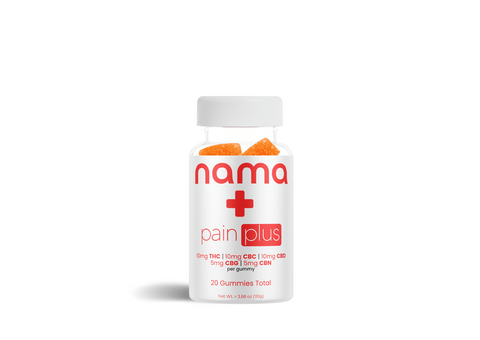
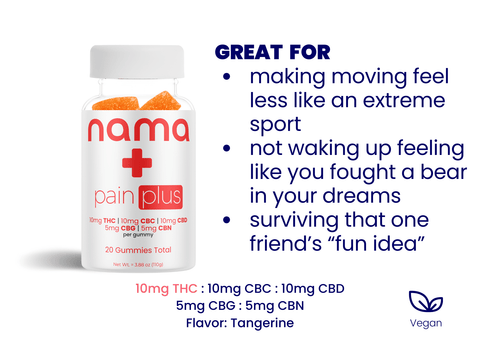
![Euphoria Black Raspberry [10ct]](http://www.namacbd.com/cdn/shop/files/nama_black_raspberry_pouch.png?v=1715285306&width=480)
![Euphoria Black Raspberry [10ct]](http://www.namacbd.com/cdn/shop/files/nama_black_raspberry_nutrition_label.png?v=1715285313&width=480)
![Euphoria Kiwi Raspberry [10ct]](http://www.namacbd.com/cdn/shop/files/nama_kiwi_raspberry_pouch.png?v=1715285056&width=480)
![Euphoria Kiwi Raspberry [10ct]](http://www.namacbd.com/cdn/shop/files/nama_euphoria_kiwiraspberry_nutrition_facts.jpg?v=1715873960&width=480)
![Euphoria Triple Berry [10ct]](http://www.namacbd.com/cdn/shop/files/nama_euphoria_triple_berry_pouch.png?v=1715286095&width=480)
![Euphoria Triple Berry [10ct]](http://www.namacbd.com/cdn/shop/files/nama_euphoria_tripleberry_nutrition_facts.jpg?v=1715873950&width=480)
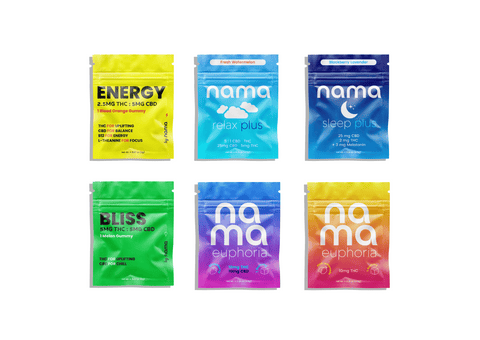
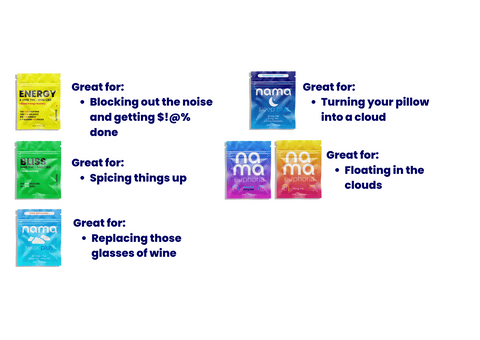
![Buzz Drops™ [THC Drink Drops]](http://www.namacbd.com/cdn/shop/files/nama_thc_buzz_drops.png?v=1711412866&width=480)
![Buzz Drops™ [THC Drink Drops]](http://www.namacbd.com/cdn/shop/files/buzz-drop-wine-comparison.png?v=1736882023&width=480)
![Buzz Packs™ [THC and CBD Powder Drink Mix]](http://www.namacbd.com/cdn/shop/files/nama_buzz_packs_thc_drink_pack_white_background.png?v=1741884660&width=480)
![Buzz Packs™ [THC and CBD Powder Drink Mix]](http://www.namacbd.com/cdn/shop/files/Buzz_Packs_Label.png?v=1741884660&width=480)
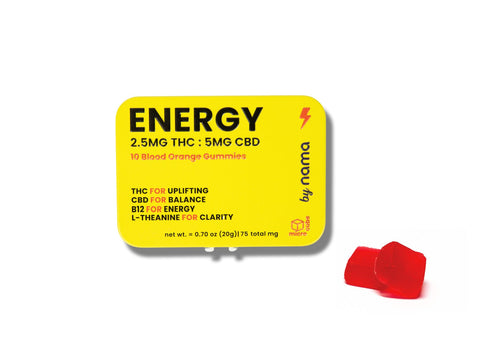
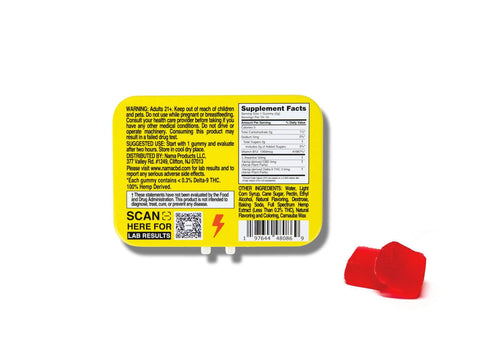
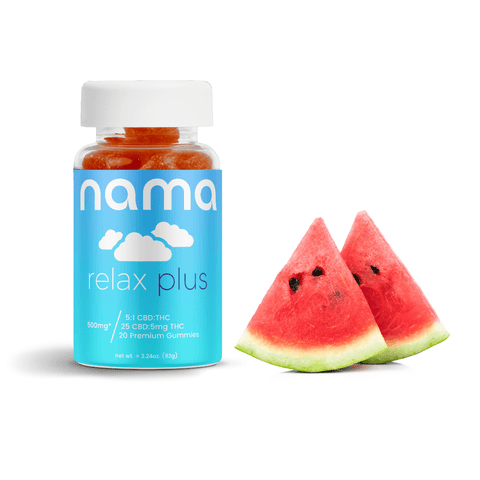
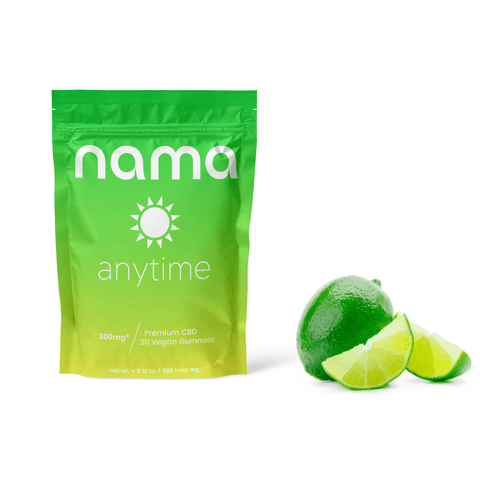
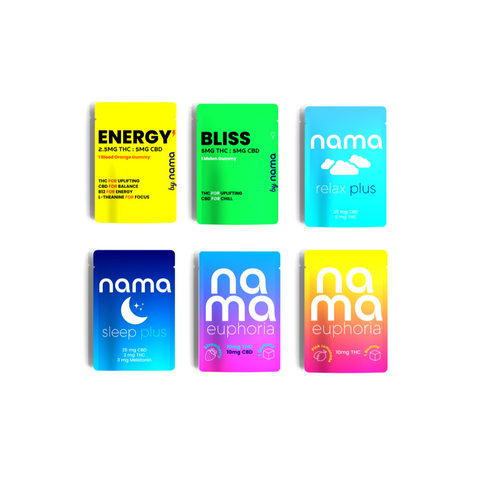
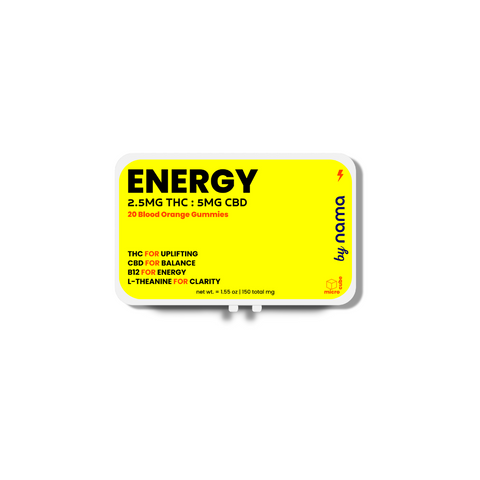

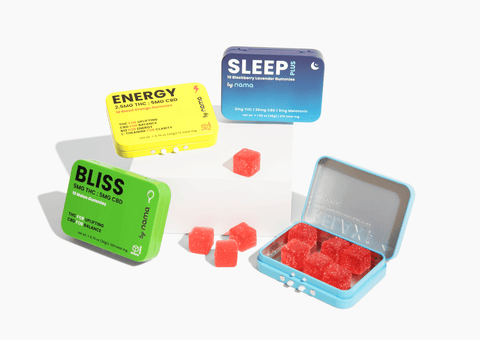
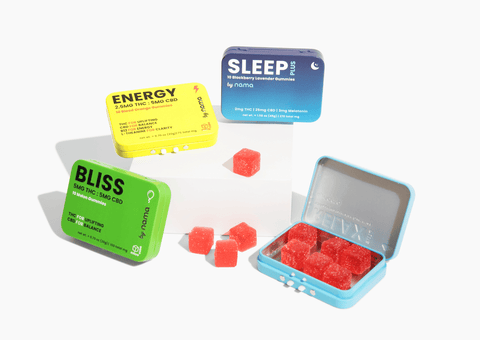
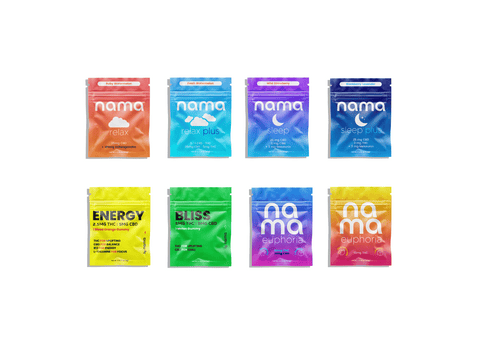


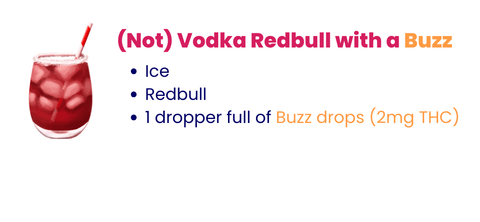


Comments (0)
There are no comments for this article. Be the first one to leave a message!